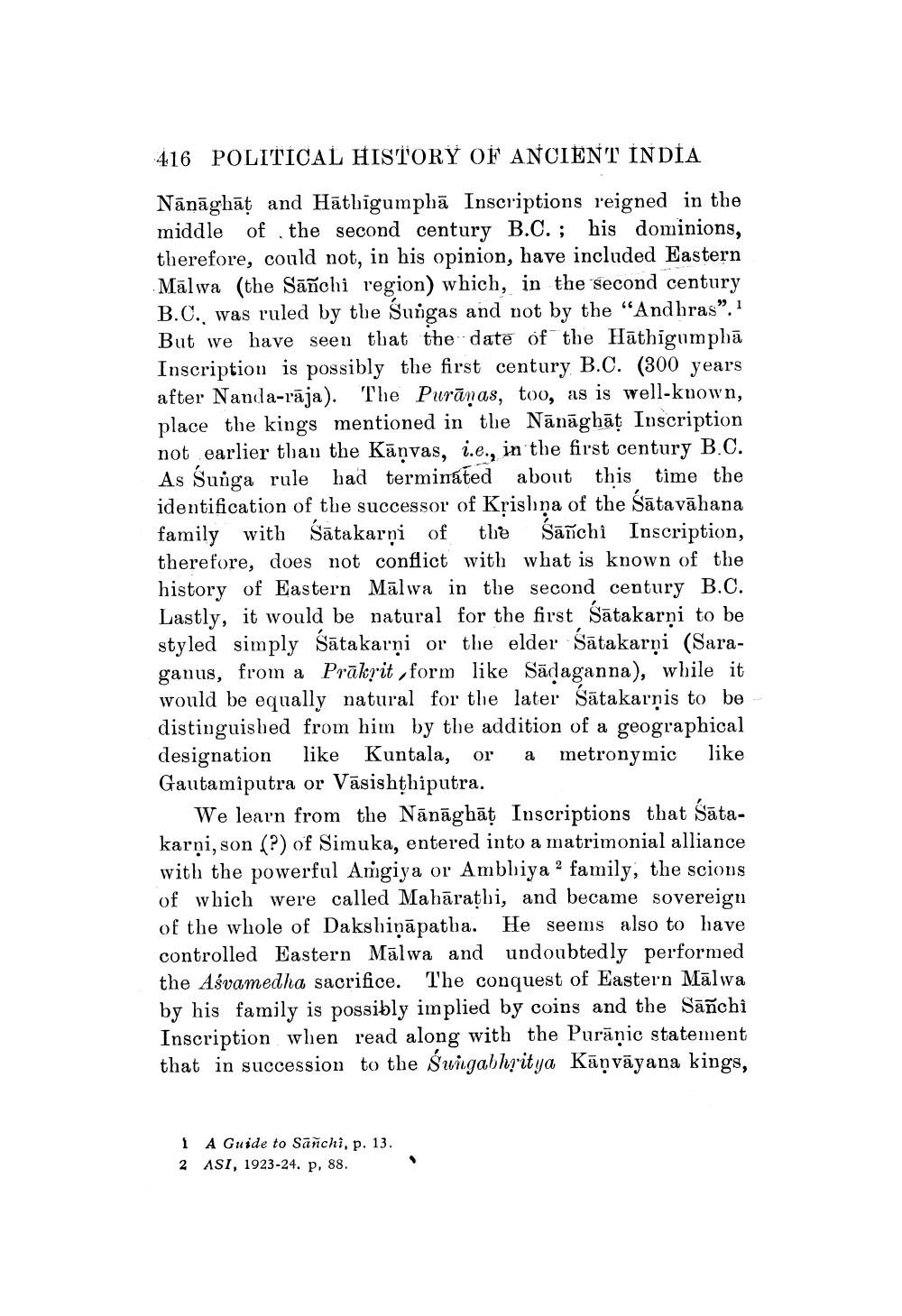________________
416 POLITICAL HISTORY OF ANCIENT INDIA
Nanaghat and Hathigumpha Inscriptions reigned in the middle of the second century B.C.; his dominions, therefore, could not, in his opinion, have included Eastern Malwa (the Sañchi region) which, in the second century B.C., was ruled by the Sungas and not by the "Andhras". 1 But we have seen that the date of the Hathigumpha Inscription is possibly the first century B.C. (300 years after Nanda-raja). The Puranas, too, as is well-known, place the kings mentioned in the Nanaghat Inscription not earlier than the Kanvas, i.e., in the first century B.C. As Sunga rule had terminated about this time the identification of the successor of Krishna of the Satavahana family with Satakarṇi of the Sanchi Inscription,
therefore, does not conflict with what is known of the history of Eastern Malwa in the second century B.C. Lastly, it would be natural for the first Satakarni to be styled simply Satakarni or the elder Satakarni (Saraganus, from a Prakrit,form like Sadaganna), while it would be equally natural for the later Satakarnis to be distinguished from him by the addition of a geographical designation like Kuntala, or a metronymic like Gautamiputra or Vasishṭhiputra.
We learn from the Nanaghaṭ Inscriptions that Satakarni, son (?) of Simuka, entered into a matrimonial alliance with the powerful Amgiya or Ambhiya 2 family, the scions of which were called Maharathi, and became sovereign of the whole of Dakshinapatha. He seems also to have controlled Eastern Malwa and undoubtedly performed the Asvamedha sacrifice. The conquest of Eastern Malwa by his family is possibly implied by coins and the Sanchi Inscription when read along with the Puranic statement that in succession to the Sungabhritya Kāṇvāyana kings,
1 A Guide to Sanchi, p. 13.
2 ASI, 1923-24. p, 88.




